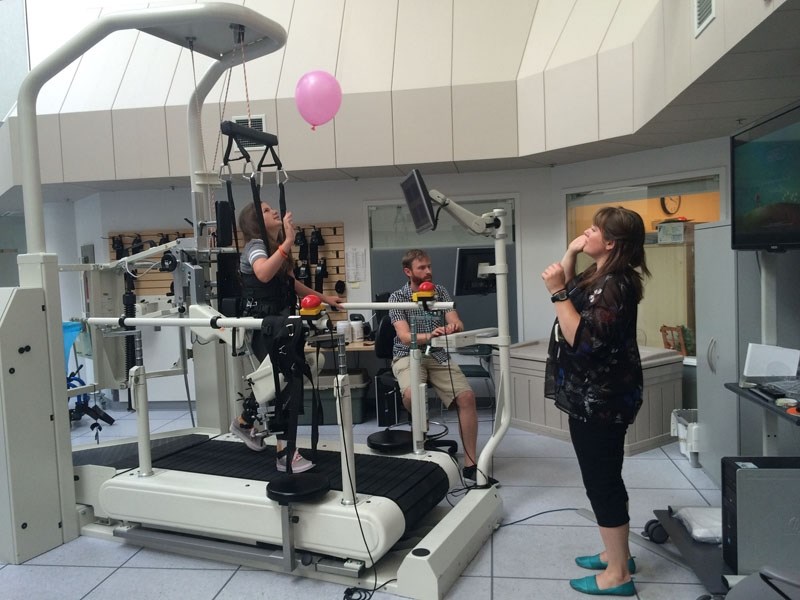Every spring for six weeks Maggie Slessor gets to be a robot. This year her transformation lasted a little longer.
The 12-year-old Sturgeon County resident is participating in a University of Alberta research study at the Glenrose Rehabilitation Hospital.
The randomized control trial, led by Lesley Wiart, assistant professor of physical therapy at the Faculty of Rehabilitation Medicine, seeks to determine the effectiveness of robotic gait training for kids with cerebral palsy.
Twice a week from May to July, Maggie was strapped into a harness device called a Lokomat. The machine assists with walking on a treadmill by providing bodyweight support and gait assistance. At first the set of robotic legs does all the work, but as strength and muscle memory develop over time the level of assistance is decreased.
Maggie, who has a common form of cerebral palsy called spastic diplegia, has been using the Lokomat since it was first available for pediatric use at the Glenrose six years ago. She is one of the first kids in North America to use the device and has worked her way down to a 40:60 ratio – 40 per cent machine and 60 per cent Maggie.
There are only a few sites within Canada that use robotic gait training with children and research focusing on Lokomat use for cerebral palsy in children is limited. Wiart hopes to add to the conversation.
“At the end of the day what we’re hoping is that we have solid information that can inform clinical practice around use of robotic gait training with children with CP,” said Wiart.
For Maggie, participating in the study meant getting more time on the Lokomat, which she loves.
“I just think it’s fun to be on the Lokomat. You can walk without holding on to anything and you can play games,” she said.
Doreen Slessor views her daughter’s participation as a way to pay it forward. She calls it “planting flowers.”
While other families before them have paved the way for therapies, school inclusion and program development, the Slessors want to play a part in brightening the lives of those who will come after.
“We believe in the Lokomat and we’ve seen a difference in various health aspects,” said Doreen. “We think it’s a great piece of machinery.”
Lokomat therapy has helped Maggie improve her balance, her gait (the way she moves her limbs and places her feet) and her confidence off the machine.
“I would see her transpose what she would do on the Lokomat to traditional therapy,” said Doreen. “She’ll do the heel-toe motion. After she’s been to the Lokomat sessions she thinks about how to place her feet.”
The research project is the largest trial of its kind and is being conducted over three different sites: Glenrose Rehabilitation Hospital, Holland Bloorview Kids Rehabilitation Hospital in Toronto and Rehabilitation Institute of Chicago.
The study measures walking speed, walking distance, gait and motor skills (the machine’s sensors measure the amount of force or resistance generated by the patient), as well as less tangible outcomes such as confidence, participation in activities and quality of life.
The research also includes a qualitative component that seeks to understand families’ and children’s experiences with the various types of intervention and their values and goals when it comes to walking.
“We have these very strong societal views when it comes to walking, as opposed to using a wheelchair or a walker,” said Wiart. “We want to understand from the perspective of families what their values are. That’s really important when therapists are working with families.”
The University of Alberta is currently recruiting more children and youth with cerebral palsy aged five to 18 who walk with or without handheld walkers. Interested families should contact [email protected] or 780-492-9098.




